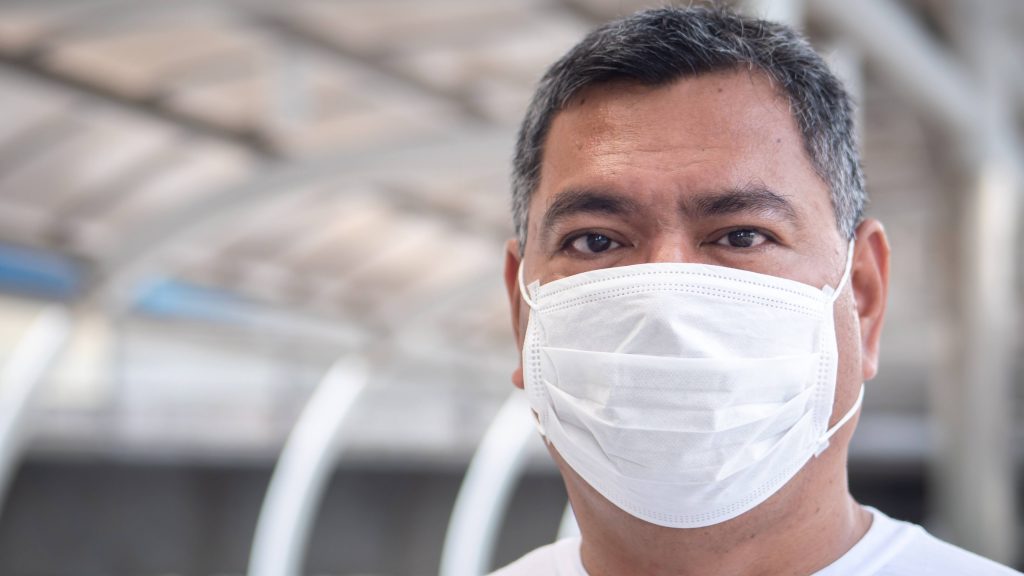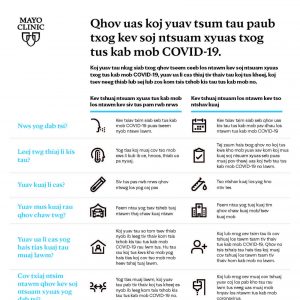-
Translating COVID-19 facts for diverse community members

There is a lot of confusion in the general public when it comes to COVID-19 testing. It’s even more confusing for community members of diverse populations, where English may or may not serve as their second language.
In Minnesota and across the Mayo Clinic enterprise there are several languages spoken by a diverse group of people and it’s critical that they get the information they need in their language, especially during a pandemic.
“In our communities, many immigrants have been directly impacted by COVID-19 due to a variety of factors,” says Robert Bonacci, M.D., Primary Care Lead for Mayo Clinic Health System Albert Lea and Austin. “Translating our information into various languages and using icons to convey information helps ensure all members of our community understand how they can get the care they need.”

When COVID-19 struck, Mayo Clinic community engagement researchers immediately began working with community members to identify their needs, questions and concerns related to the pandemic, including prevention and testing.
An icon graphic was created in English showing the differences between the two most commonly available tests and what people need to know to protect themselves, their family and their community. Soon a need arose to reach community members who are not able to read or speak English.

“We know that when we can provide the right information in a linguistically and culturally competent manner, we are more likely to reach otherwise harder to serve populations which is critical in the fight against COVID-19,” says Irene Sia, M.D., M.Sc., who together with Mark Wieland, M.D., M.P.H. leads a community engaged research partnership and uses a community-based participatory research approach to managing the pandemic in Rochester.
The icon graphic in English shows when it is necessary to get COVID-19 testing and what community members need to know. Links to printable flyers are available on the Mayo Clinic Health System Covid-19 webpage. Translations are available in the following languages: Anuak, Arabic, Hmong, Karen, Karenni, Khmer, Spanish, Somali, and Tagalog.
Stay informed
Visit the COVID-19 Information Center for resources to help you care for patients, yourself, your family and each other.
Information in this post was accurate at the time of its posting. Due to the fluid nature of the COVID-19 pandemic, scientific understanding along with guidelines and recommendations may have changed since the original publication date.
For more information and all your COVID-19 coverage, go to the Mayo Clinic News Network and mayoclinic.org.







